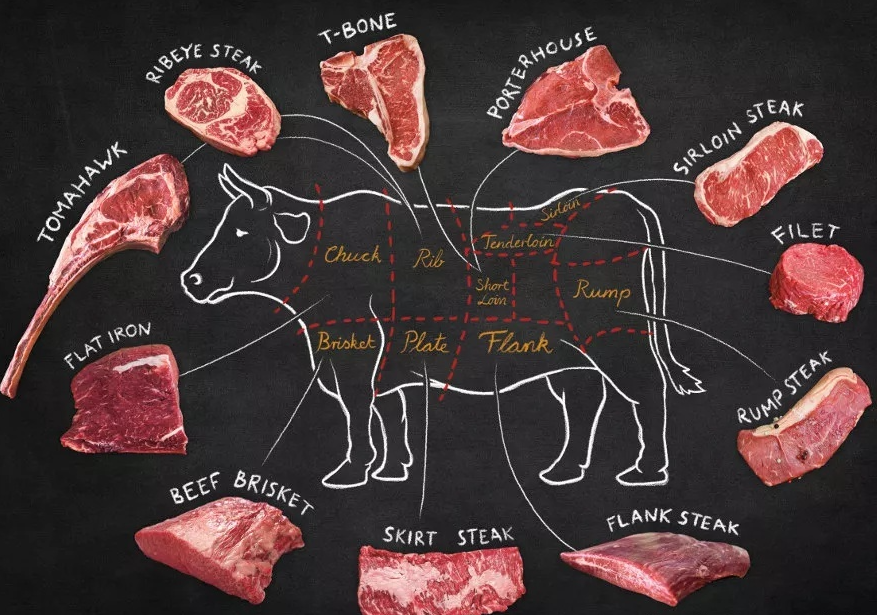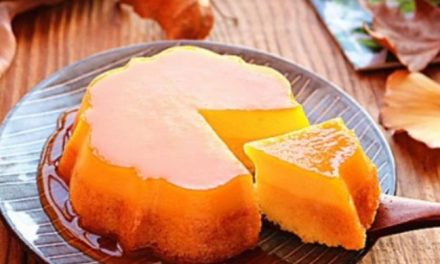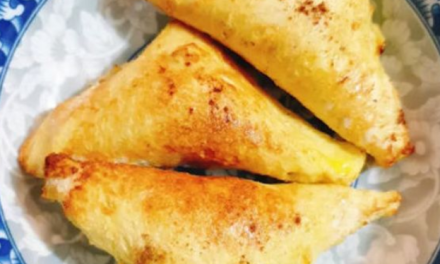The type of steak
There are many types of steaks, and there are four common types in restaurants: filet mignon, rib-eye steak, sirloin steak, and T-bone steak.
1. filet mignon
Tenderloin, also known as Fillet, is the tenderest meat on the rib with almost no fat. Because of its tender meat, it is very popular among friends who love lean meat.
Edible tips: fry medium rare, medium rare and medium rare.
2. Rib-eye steaks
Rib-eye steak is the meat on the rib. It has both lean and fatty meat. Because it contains a certain amount of fat, this kind of meat tastes more fragrant when grilled.
Edible tips: Don’t overcook, medium rare is best.
3. Sirloin Steak
Sirloin Steak, the meat on the outer rib of the beef, contains a certain amount of fat, and there is a circle of white tendons on the extension of the meat. The overall taste is strong and tough, the meat is hard and chewy. Suitable for young people and people with good teeth.
Edible tips: When cutting the meat, cut it together with the tendons and meat, and don’t fry it too much, medium cooked is the best.
4. T-bone steaks
T-bone is T-shaped (or “D”) and is the backbone meat on the back of a cow. On both sides of the T-shaped, there is a large amount and a small amount. The larger amount is sirloin, and the smaller amount is filet. The middle is separated by ribs, half chewy and half tender and delicate.
Eating tip: medium or medium rare is best.
The doneness of the steak
Steak is different from most other cooked foods in that the steak is usually not cooked to perfection, but the degree of doneness is adjusted according to personal preference.
1. Rare
The inside of the steak is blood red and maintains a certain temperature throughout. At the same time, there are raw and cooked parts, the surface is slightly burnt, delicious and juicy.
2. Medium rare
Most of the meat is penetrated to the center by heat, but there is no major change. After cutting, the cooked meat on the upper and lower sides is brown, turning pink toward the center, and then the center is fresh meat, with red juice oozing out with the knife.
3. Medium
The interior of the steak is a light gray and brownish brown with visible pink in the area and mixed with cooked meat, and the temperature and taste of the whole steak are balanced.
4. Medium well
The interior of the steak is mainly light gray and brown, with a small amount of pink, and the texture is thick and chewy.
5. Well done
The whole body of the steak is cooked brown, the whole beef is cooked, and the taste is thick.
Q&A:
Does ordering a medium or well done steak really get laughed at?
Answer: The degree of rawness of steaks is divided by odd numbers. There is no such thing as half-rare. However, choosing well-done is just a matter of personal taste and eating habits. There is no difference between personal preferences. But if you order a well-done steak at a very good restaurant, the chef may express regret, because that is a performance that questioned the quality and cooking skills of the beef, and also wasted the nutrition and taste of a good steak.
Is the red juice that comes out of the steak cutting blood?
Answer: Many people feel that the red liquid flowing out of undercooked beef is bloody, so they have a natural resistance. In fact, when beef cattle are slaughtered regularly, they will be bled, except that there may be a small amount of coagulation in the internal organs and blood vessels, and there is almost no blood in the muscles. This red juice is not blood, but is stained red by the myoglobin in the beef. It is not blood but overflowing meat juice.
Is undercooked steak really safe to eat?
Answer: You can eat it with confidence, but the premise is “original-cut steak”. For “original-cut steak” sold through regular channels, it can generally be considered that only the cut surface of the steak is contaminated with bacteria, while the inside of the meat is in a sterile state. Medium-rare or medium-rare, when frying steak, the surface temperature of the meat is sufficient to kill bacteria, so there is no need to worry about the influence of pathogenic bacteria. However, there are many “spliced steaks” on the market, most of which are made of “corner meat” added with glutaminase and xanthan gum and other raw materials after splicing and pressing. Because they are all minced meat, the interior of this type of steak may also be Contains pathogenic bacteria and must be fully cooked when eaten.
The cooking of steak
The steak can be fried or grilled. For a long time, tenderness and fragrantness cannot be at the same time. If it is tender, it cannot be fried for too long and it will not be so fragrant; if it is fragrant, it has to be grilled at high temperature. Of course, the meat will become hard. With the advancement of technology, especially the rise of molecular cuisine, steak cooking has found a more suitable method: pre-treat the steak with a low-temperature slow cooker, let the interior mature first, and fry it a little before serving to increase the flavor. In traditional cooking, due to local high temperature, the food is endogenous, shrinking and drying.
The emergence of household low-temperature slow cookers has brought steak cooking into the homes of ordinary people. With the slow cooker, everyone can easily cook a five-star steak according to the steak slow cook temperature schedule.
A simple trilogy of slow-cooked steaks:
1. Vacuum packaging
Sprinkle sea salt and black pepper on the surface of the steak to lightly season, add the rosemary leaves and vacuum-pack it, and then put it into the container of the low-temperature slow cooker. The original juice and water are separated, which can be preserved better than frying, steaming and boiling. Vitamin ingredients, which can preserve the original flavor and color of food to the greatest extent.
2. Slow cook at low temperature
The low-temperature slow cooker can precisely control the temperature and timing, and can easily switch between Fahrenheit ℉ and Celsius ℃. During cooking, after setting different temperature and time according to the doneness of the steak, you can leave the kitchen, not only to amuse children, walk Dogs play cats, you can also watch dramas and do housework, completely free.
Note: We subconsciously believe that sterilization requires a high temperature above 100 °C. In fact, using a lower temperature (usually 60 to 82 °C) and heating the ingredients within a specified time can achieve the purpose of sterilization. A method that can sterilize without compromising the quality of ingredients, such as “pasteurization”.
3. Seasoning
Once the food is removed from the slow cooker, season it to your liking. There are various ways of seasoning, which can be coked with a flamethrower or fried in a frying pan for dozens of seconds. Then drizzle with black pepper sauce or chili sauce, and then serve with vegetables, you can enjoy all the colors and flavors.








Recent Comments